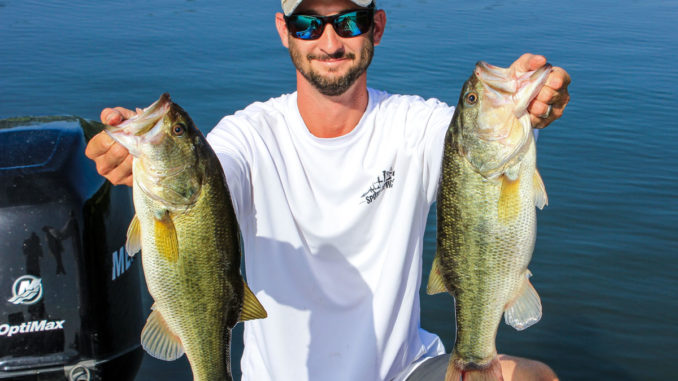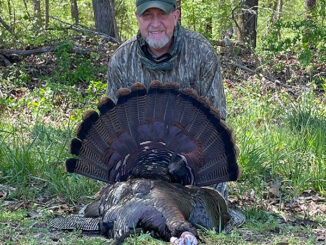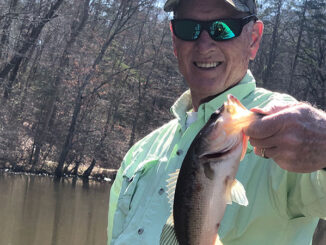
Spawning fish get ready to head for buffet table
According to guide J.T. Palmore of Blackstone, Va., May is a transition month for largemouth bass at Lake Gaston on the North Carolina/Virginia border. That doesn’t mean it’s not one of the best times to visit — it just means you have more options.
“The majority of the fish will spawn from the second week in April to the first full moon in May, then, the males will move into fry guards,” said Palmore, who honed his skills while growing up on Gaston. “Later in May, a good percentage of the fish will be recovering from the spawn. Typically, there is a lull, and then they really start to put on the weight. You’ll have certain fish that go out to the points, ledges and bridges, and then there are fish that stay shallow and hunt the bream that are spawning.”
Palmore, who runs Lake Gaston Pro Guide Service (804-586-7645), prefers sight-fishing for the spawners and fry guards in backs of the major creek arms and protected pockets in less than a foot to 4 feet of water. Armed with polarized sunglasses, he scans for cruising fish and casts to spots where a fish sees the bait as it’s swimming towards it.
“I’ll swim a jig in front of him or throw a watermelon seed-colored Fluke,” Palmore said. “A topwater bait is also a good choice. I’ll use a Pop-R or a Zara Spook in a bream color like green with chartreuse because that’s what they’re feeding on. A shaky head is another awesome bait. Perfection Lures makes an 1/8-ounce (jighead) that has wires on it so it stands up perfectly every time. I’ll use it with a Zoom finesse worm.”
Palmore takes advantage of the schooling nature of post-spawn fish as they maul pods of shad near current breaks. He mimics shad with a clear or white Zara Spook or Fluke-style soft jerkbait. He targets points, ledges and bridges on the main lake or in a major creek channel in 8 to 15 feet of water. He notes, however, that such areas are only productive when current is being drawn through the dam for power production. In slack water, Palmore turns back to the shallows and watches bream beds.
“They get into what we call wolf packs and hunt the bream,” he said. “It’s not uncommon to see a group of fish swimming in 12 inches of water.”
Palmore utilizes many of the same jigs and topwater baits for bream-chasing bass as he uses for spawning bass.





Be the first to comment